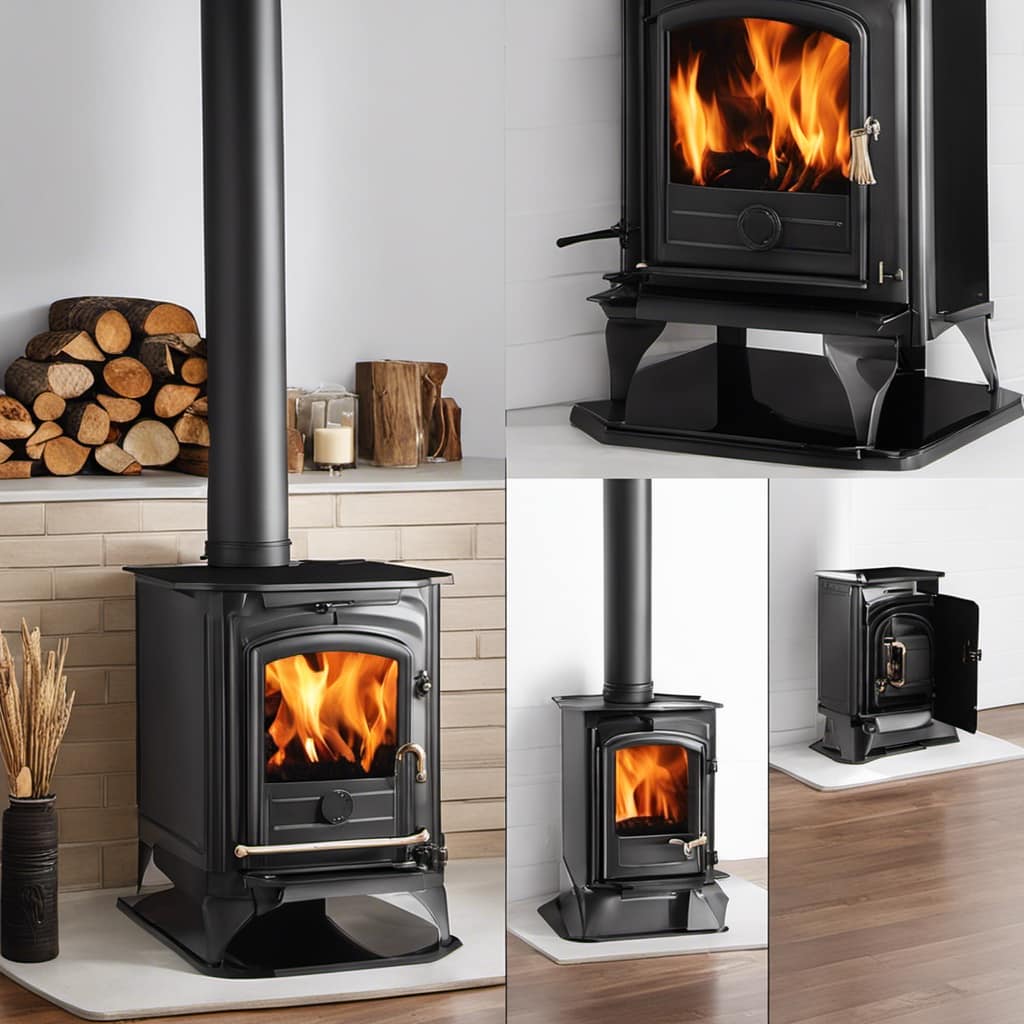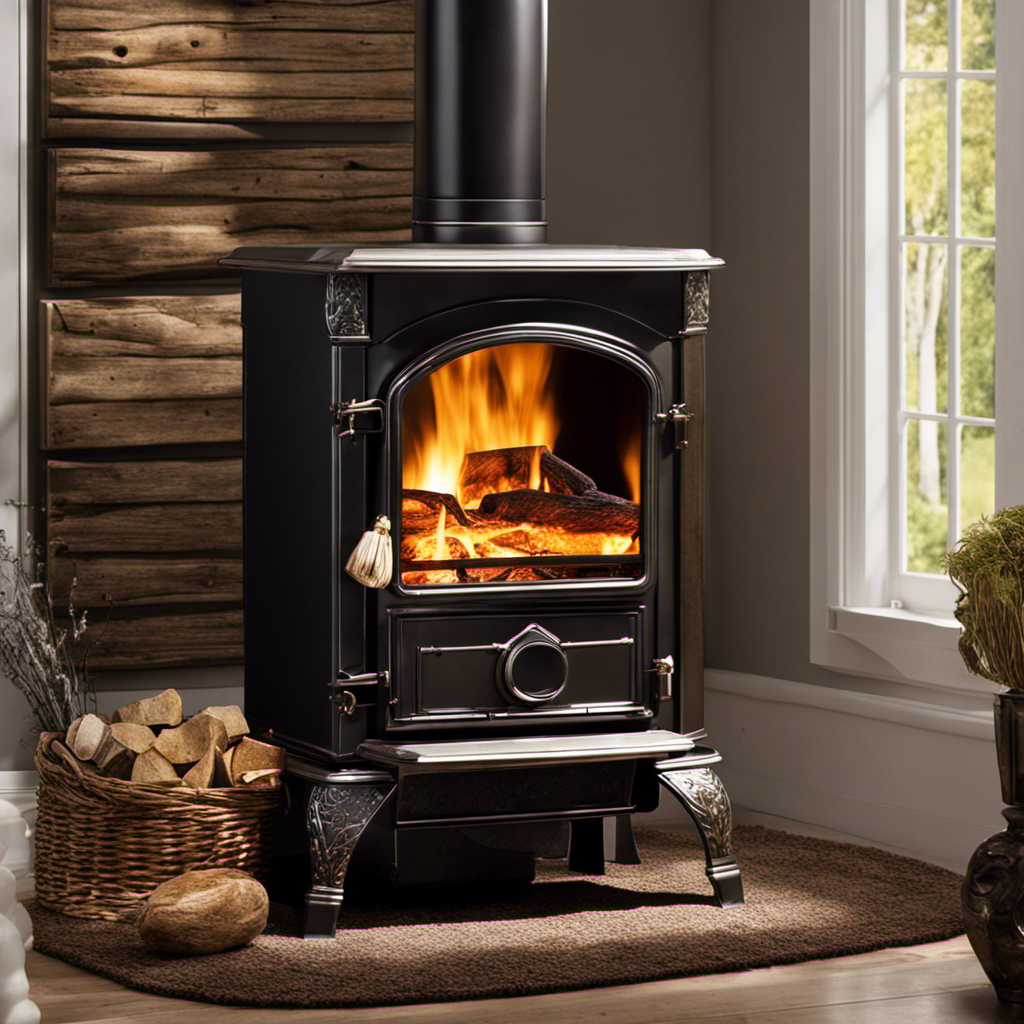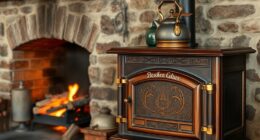Scrubbing your integrated cast iron wood stove is akin to treating your trusty fireplace to a rejuvenating spa experience.
In this guide, I’ll walk you through the steps to keep your stove looking and performing its best.
We’ll start by preparing the stove for cleaning, removing ash and debris, and tackling the cast iron surface.
Then, we’ll dive into cleaning the glass door or windows and share tips for maintaining and preventing future build-up.
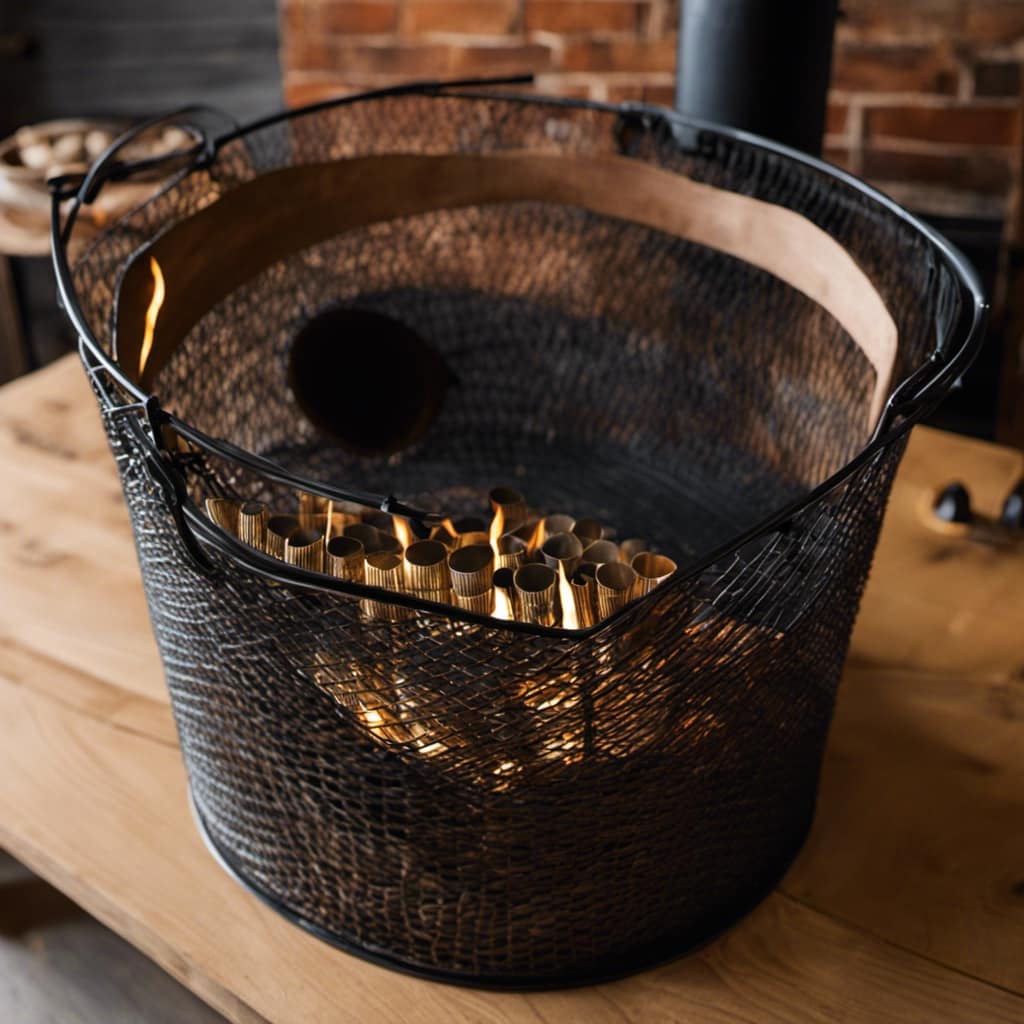
Let’s get your wood stove shining like new!
Key Takeaways
- Cover the vents to prevent debris from entering the system and allow the stove to cool down completely before covering them.
- Use a specialized scoop or vacuum designed for ash removal to carefully remove ash and debris, avoiding the use of a regular household vacuum cleaner.
- Clean the cast iron surface with a small amount of vinegar, using a soft cloth or sponge dampened with vinegar and avoiding abrasive cleaners or harsh chemicals.
- Clean the glass door or windows using a mixture of vinegar and water, allowing the stove to cool down before cleaning and gently scrubbing the glass with a non-abrasive sponge or cloth.
Preparing the Stove for Cleaning
I need to remove the ashes and wipe down the surfaces before I can start cleaning the stove.
When preparing a built-in cast iron wood stove for cleaning, it’s important to cover the vents to prevent any debris from entering the system. This helps maintain optimal airflow and ensures the stove functions efficiently.
Before covering the vents, it’s crucial to ensure the stove has completely cooled down. Safety precautions must always be taken when dealing with a hot stove.

Once the stove is cool, I use a damp cloth to wipe down the exterior surfaces, removing any dust or residue. This step not only keeps the stove looking clean but also prevents any buildup that may affect its performance.
Removing Ash and Debris
To efficiently clean the built-in cast iron wood stove, it is crucial to carefully remove the ash and debris using a specialized scoop. This ensures that the stove remains in good condition and operates optimally. When removing ash, it is important to avoid using a regular household vacuum cleaner as it can cause damage and create a fire hazard. Instead, opt for a vacuum specifically designed for ash removal, which has a heat-resistant hose and filter. Another effective method is to sweep the debris using a stiff brush or broom. Make sure to wear protective gloves and a mask to avoid inhaling any harmful particles. Here is a table to summarize the best practices for cleaning a cast iron wood stove:
| Method | Tools Required | Safety Precautions |
|---|---|---|
| Vacuuming Ash | Ash Vacuum | Wear protective gear |
| Sweeping Debris | Stiff brush or broom | Use gloves and a mask |
Cleaning the Cast Iron Surface
Using a soft cloth, wipe the cast iron surface with a small amount of vinegar to effectively remove any stubborn residue.
When it comes to cleaning a cast iron wood stove, there are a few techniques and recommended cleaning products that can help maintain its longevity and efficiency.
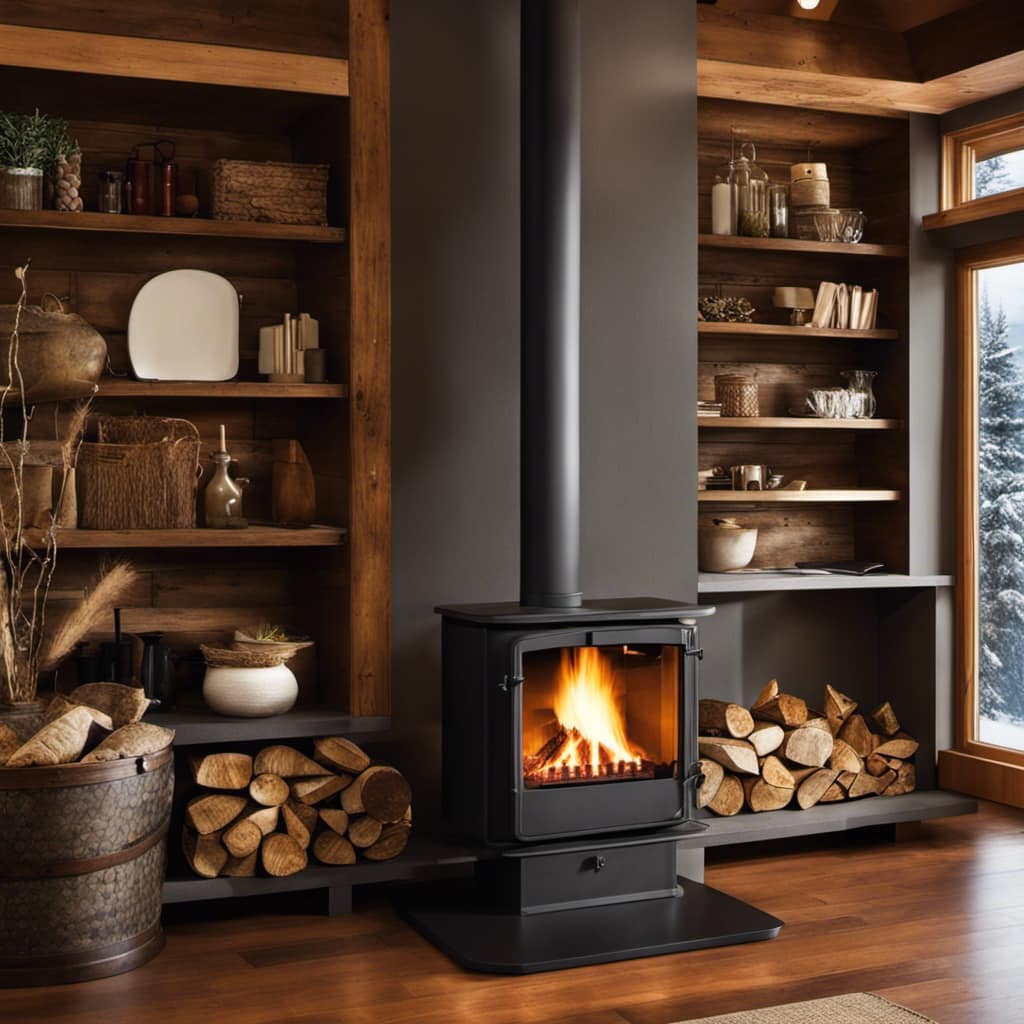
Firstly, it’s important to remove any ash and debris from the stove before proceeding to clean the cast iron surface.
Once the initial cleaning is done, using a soft cloth or sponge, dampen it with a small amount of vinegar and gently wipe the surface. Vinegar is a natural and effective cleaner that can help remove any stubborn residue without damaging the cast iron.
It’s important to avoid using abrasive cleaners or harsh chemicals, as they can strip away the seasoning on the cast iron and cause it to rust.
After wiping with vinegar, make sure to thoroughly dry the surface to prevent any moisture buildup.

Regular cleaning and maintenance will keep your cast iron wood stove looking clean and functioning optimally.
Cleaning the Glass Door or Windows
I regularly use a mixture of vinegar and water to clean the glass door of my cast iron wood stove. Cleaning the glass door is essential to maintain the aesthetic appeal of the stove and ensure its functionality.
Here are some proper cleaning techniques for removing stubborn soot stains from the glass door:
- Start by letting the stove cool down completely before cleaning.
- Mix equal parts vinegar and water in a spray bottle.
- Spray the solution onto the glass door and let it sit for a few minutes.
- Scrub the glass door gently using a non-abrasive sponge or cloth.
To prevent condensation and fogging on the wood stove windows, follow these tips:

- Keep the air vents open to maintain proper air circulation.
- Use seasoned firewood to reduce moisture content.
- Install a dehumidifier in the room to control humidity levels.
- Consider using a glass cleaner specifically designed for wood stove windows.
Maintaining and Preventing Future Build-up
Regular maintenance is crucial for preventing future build-up and ensuring the longevity of your wood stove.
To maintain efficiency, it’s important to clean the stove regularly, removing any ash or debris that may have accumulated. Start by allowing the stove to cool down completely before cleaning.
Use a brush to sweep out the ashes and wipe down the surfaces with a damp cloth. For stubborn build-up, a stove cleaner can be used, following the manufacturer’s instructions.
Additionally, safety precautions should be taken when maintaining the wood stove. Always wear gloves and protective eyewear to prevent injury. Ensure that the stove is completely cooled before attempting any maintenance.
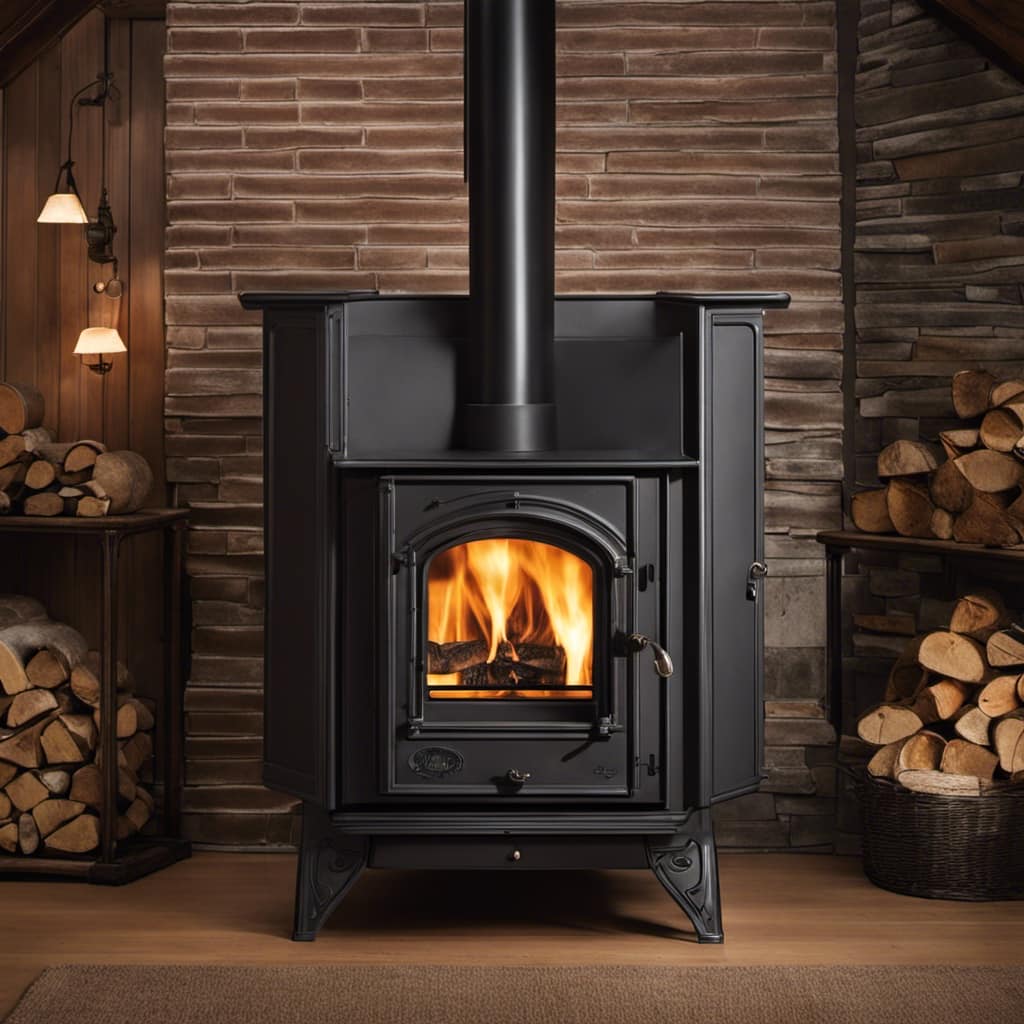
Regular maintenance not only keeps your wood stove operating at its best but also minimizes the risk of fire hazards.
Frequently Asked Questions
How Often Should I Clean My Built-In Cast Iron Wood Stove?
I clean my built-in cast iron wood stove every 6 months. It’s important to inspect it regularly for signs of dirtiness, such as soot buildup or a decrease in efficiency. Regular maintenance ensures optimal performance.
Can I Use Any Type of Cleaner on the Cast Iron Surface?
Yes, you can use certain cleaning products on the cast iron surface of your built-in wood stove. However, it’s important to avoid harsh chemicals and opt for gentle alternatives like baking soda or vinegar for a safe and effective cleaning.
What Is the Best Method for Cleaning Stubborn Soot Stains off the Glass Door or Windows?
To clean stubborn soot stains off the glass door or windows, I suggest using a cleaning agent specifically designed for removing soot. Apply the cleaner with a soft cloth or sponge, scrub gently, and then wipe clean with a damp cloth.

Can I Use Water to Rinse off the Ash and Debris From the Stove?
No, water should not be used to rinse off the ash and debris from the stove as it can cause damage. Instead, consider using proper cleaning techniques and alternatives to ensure a thorough and safe cleaning process.
Are There Any Specific Maintenance Techniques to Prevent Rust From Forming on the Cast Iron Surface?
To prevent rust on the cast iron surface of a built-in wood stove, it is important to follow proper cleaning techniques and maintenance routines. Regularly removing ash and debris, applying a protective coating, and keeping the stove dry can help prevent rust from forming.
Conclusion
Cleaning a built-in cast iron wood stove is a breeze with these simple steps.
Prepare the stove by removing any debris and ash.
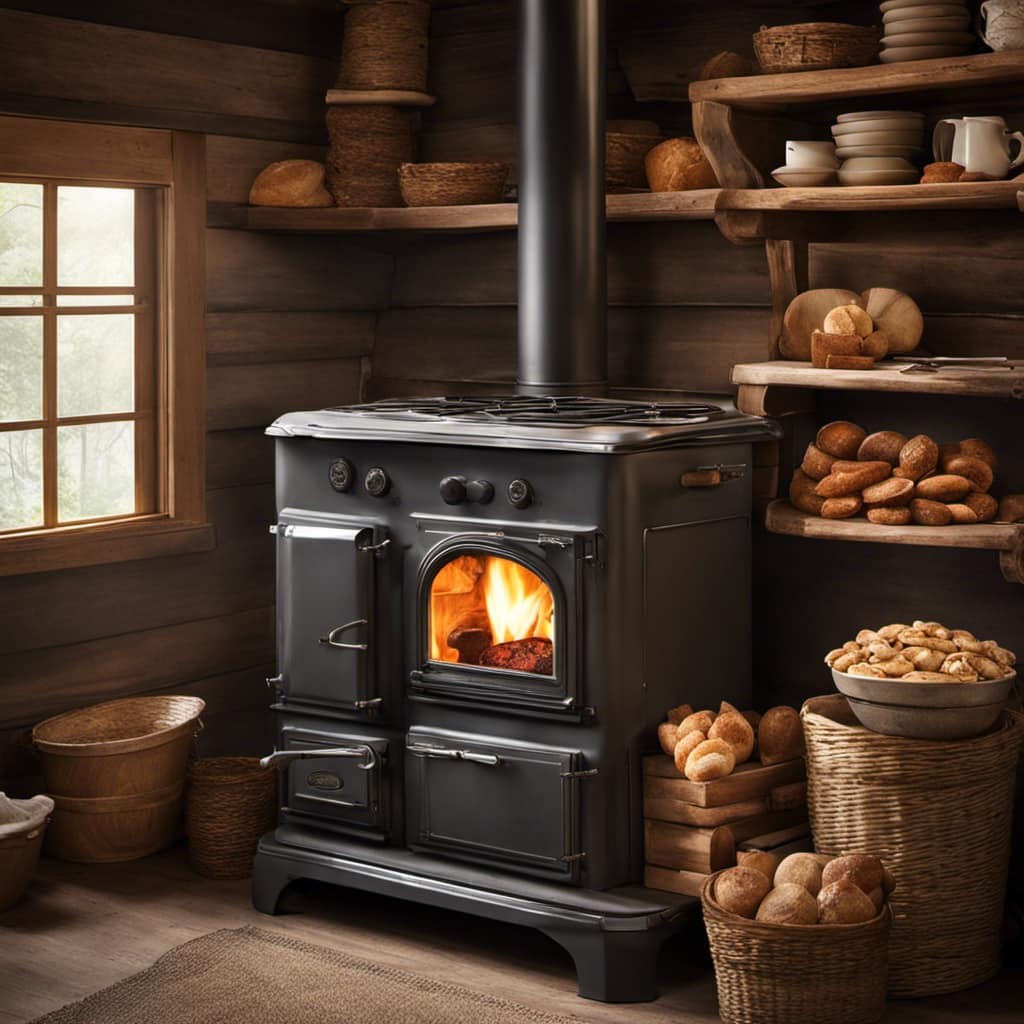
Clean the cast iron surface using a gentle cleaner.
Don’t forget to give the glass door or windows a good scrub too.
By regularly maintaining your stove and preventing future build-up, you’ll ensure it stays in top shape and continues to provide cozy warmth for years to come.
Growing up surrounded by the vast beauty of nature, Sierra was always drawn to the call of the wild. While others sought the comfort of the familiar, she ventured out, embracing the unpredictable and finding stories in the heartbeat of nature.
At the epicenter of every remarkable venture lies a dynamic team—a fusion of diverse talents, visions, and passions. The essence of Best Small Wood Stoves is crafted and refined by such a trio: Sierra, Logan, and Terra. Their collective expertise has transformed the platform into a leading authority on small wood stoves, radiating warmth and knowledge in equal measure.




